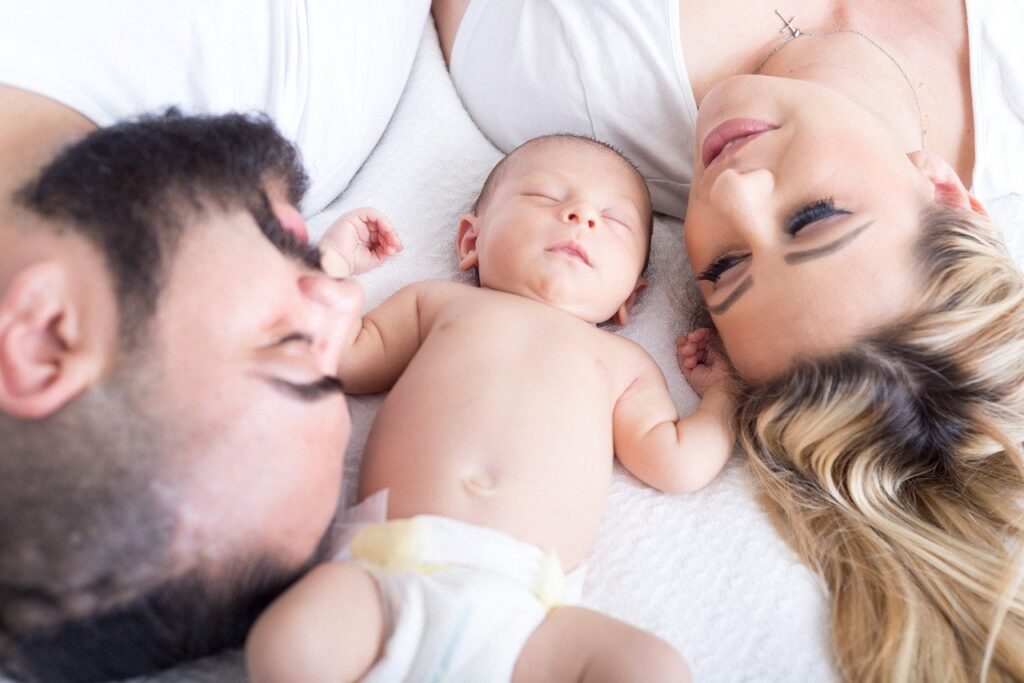Every bleary-eyed parent knows all too well the importance of a good night’s sleep — if your baby is constantly waking during the middle of the night, your own sleep patterns will inevitably be disrupted, leaving you tired and grumpy in the morning. If you can identify with this situation and could use some help, reason for some great tips for sleep training.
What We Don’t Want to Hear
Some food for thought; if you slept every night with a comfortable pillow, as in mum or dad being that pillow and they start falling asleep with their child every night, what happens when you take that comfortable pillow away? Naturally a child won’t sleep.
Any parent will agree that they need their down time, couples need together time, or time to just catch up on themselves after their child sleeps. Spending hours putting your child to sleep, will ultimately just cause more problems in the long run as they will simply not know how to fall asleep alone. It’s so tempting at the end of a long day to just fall asleep next to your little one or enjoy their cuddle time for just a little bit too long; but how can you then teach or train your child to fall asleep by themselves and create healthy sleeping habits? Any sleep specialist will agree that most sleep issues in babies and children stem from their parents and not necessarily the child. I know that’s not really what any tired parent wants to hear but as we all know, a little hard work at the beginning, brings a host of benefits at the end.

What is Sleep Training?
The goal of sleep training is for your baby or child to be comfortable sleeping for several hours through the night on their own. If they wake up, they’ll learn to self-soothe and fall back asleep. There are several sleep training methods parents can use which have been developed by pediatricians and sleep experts.
Once they’ve been sleep trained, babies can sleep 9-12 hours at night. With more restful sleep, they’ll feel better during the day, as will their parents which can improve the overall quality-of-life for the family. Little ones will still need their naps during the day, but tired and especially moms still recovering from pregnancy can enjoy more restful sleep.
With some sleep training methods, babies can be sleeping on their own within a matter of days. For others, particularly gentler methods that minimize crying, the process can take longer. There is no right way to sleep train, but staying consistent and patience is the key to success.
Teaching babies to sleep is more than just letting them cry by themselves, look closely at your child’s routine; are there any issues around sleep time, older kids vying for attention, deadlines to meet at work, dinner to make etc., try to make a list of ways you can resolve these issues for a few weeks while you focus on training your baby or child to get into a good sleep pattern.

Questions Commonly Asked
First of all it’s important to remember there will be some crying in the beginning, especially if the baby or child never had to sleep alone. Also all children are different and what works for one may need tweaking for others, change things slowly and see the baby’s reaction. On subsequent nights, the baby will spend more and more time in the cot by themselves.
How long does it take?
Six to seven nights, maybe less depending on the length of time you have been ‘putting your child to sleep. If the baby is accustomed to crying and expecting to get what he or she wants when the parents are around sometimes the process can take longer.
How old are babies when you typically sleep train?
A baby must be around 5 months old to be able to sleep through the night, so the age range is 5 months to 24 months. The child must still be sleeping in their own cot, without being able to run out of the room.
Can you sleep train toddlers?
Sleep training gets harder and takes longer for older babies especially if the child is no longer in a cot but in reference to the statements above it is far easier to patiently train a toddler than have to tackle the issue when they are school age or if another sibling comes along. In the case of toddlers it’s more about bed placement, bedtime routines, eating habits and sometimes parents not wanting to let go. Make a list of their routines, what can be changed, a small progress chart, a reward chart if the child is old enough and the trick is consistency until the child knows that each time they get up they will be taken back to bed to sleep alone.
What is the success rate?
On the whole, it’s good but if parents change their minds in the middle of the training or are not consistent then obviously there will be no success. Parents must be determined to be successful in order for sleep training to work
















